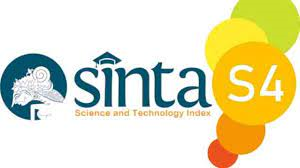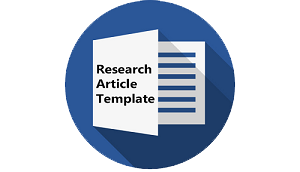Writing Competence and Lexical Diversity in EFL Context of Hungarian and Jordanian University Students
DOI:
https://doi.org/10.30957/ijoltl.v9i1.769Keywords:
Keywords: English as a foreign language, Writing competence, Lexical diversity, Holistic scoring, Written productionAbstract
This study investigates the relationship between lexical diversity (LD) and writing competence in English as a Foreign Language (EFL) among 66 Hungarian and 64 Jordanian university students. After completing a bilingual language profile, participants wrote narratives following a silent film and were analyzed using Text Inspector. Results showed a significant positive correlation between writing competence scores and LD measures (VocD and MTLD) in both groups, with slightly higher scores for Hungarians. The Hungarian group had more participants at the C1 level, while Jordanians were predominant at B2. Gender differences in LD and writing competence were observed but not statistically significant. This research provides practical insights for educators, highlighting the correlation between writing competence and LD, and offering implications for effective language-learning strategies in the EFL context.
Downloads
References
Astika, G. G. (1993). Analytical assessments of foreign students' writing. RELC journal, 24(1), 61-70. DOI: https://doi.org/10.1177/003368829302400104
Bax, S. (2012). Text Inspector [Online text analyzer]. Retrieved from http://textinspector.com
Bax, S., Nakatsuhara, F., & Waller, D. (2019). Researching L2 writers’ use of metadiscourse markers at intermediate and advanced levels. System, 83, 79-95. DOI: https://doi.org/10.1016/j.system.2019.02.010
Birdsong, D., Gertken, L. M., & Amengual, M. (2012). Bilingual Language Profile: An Easy-to-Use Instrument to Assess Bilingualism. COERLL.
Coady, J., & Huckin, T. (1997). Second language vocabulary acquisition: A rationale for pedagogy. Cambridge University Press. DOI: https://doi.org/10.1017/CBO9781139524643
Cremin, T. and Myhill, D. (2012) Writing Voices, Creating Communities of Writers. Oxon: Routeledge. DOI: https://doi.org/10.4324/9780203803332
Crossley, S. A., & McNamara, D. S. (2011). Interactions between cognitive abilities, vocabulary knowledge, and reading skills. Language Learning, 61(2), 495-534.
Crossley, S. A., Salsbury, T., & McNamara, D. S. (2012). Predicting the proficiency level of language learners using lexical indices. Language testing, 29(2), 243-263. DOI: https://doi.org/10.1177/0265532211419331
Crossley, S. A., Salsbury, T., & McNamara, D. S. (2015). Assessing lexical proficiency using analytic ratings: A case for collocation accuracy. Applied Linguistics, 36(5), 570-590. DOI: https://doi.org/10.1093/applin/amt056
Crystal, D. (1987). Towards a ‘bucket’theory of language disability: Taking account of the interaction between linguistic levels. Clinical Linguistics & Phonetics, 1(1), 7-22. DOI: https://doi.org/10.1080/02699208708985001
Cutillas, L., Tolchinsky, L., Rosado, E., & Perera, J. (2014). Indicators of lexical growth throughout age, genre and modality for a Catalan L1 corpus. Specialisation and variation in language corpora, 161-188.
Daller, H., & Phelan, D. (2007). What is in a teacher’s mind? Teacher ratings of EFL essays and different aspects of lexical richness. Modelling and assessing vocabulary knowledge, 234-244. DOI: https://doi.org/10.1017/CBO9780511667268.016
De Haan, P., & Van Esch, K. (2005). The development of writing in English and Spanish as foreign languages. Assessing writing, 10(2), 100-116. DOI: https://doi.org/10.1016/j.asw.2005.05.003
Ellis, R. (2006). Modelling Second Language Performance: Integrating Complexity, Accuracy, Fluency, and Lexis. Applied Linguistics, 27(3), 388-416.
Engber, C. A. (1995). The relationship of lexical proficiency to the quality of ESL compositions. Journal of second language writing, 4(2), 139-155. DOI: https://doi.org/10.1016/1060-3743(95)90004-7
Feldman, H.M., Dale, P.S., Campbell, T.F., Colborn, D.K., Jurs-Lasky, M., Rockette, H.E., & Paradise, J.L. (2005). Concurrent and predictive validity of parent reports of child language at ages 2 and 3 years. Child Development, 76 (4), 856–868. DOI: https://doi.org/10.1111/j.1467-8624.2005.00882.x
Fradis, A., Mihailescu, L., & Jipescu, I. (1992). The distribution of major grammatical classes in the vocabulary of Romanian aphasic patients. Aphasiology, 6(5), 477-489. DOI: https://doi.org/10.1080/02687039208249485
Freebody, P., & Anderson, R. C. (1983). Effects on text comprehension of differing proportions and locations of difficult vocabulary. Journal of Reading Behavior, 15(3), 19-39. DOI: https://doi.org/10.1080/10862968309547487
Gonzalez, M. (2013). The intricate relationship between measures of vocabulary size and lexical diversity as evidenced in non-native and native speaker academic compositions.
González-Fernández, B., & Schmitt, N. (2017). Vocabulary acquisition. The Routledge handbook of instructed second language acquisition, 280-298. DOI: https://doi.org/10.4324/9781315676968-16
Haryanto, H. (2020). Enhancing English Learning Achievement through Problem Based Learning: An Action Research at SMAN 1 Jepara. IJOTL-TL: Indonesian Journal of Language Teaching and Linguistics, 5(2), 81-94.
Hattie, J. (2010). On being a'critic and conscience of society': The role of the education academic in public debates. New Zealand Journal of Educational Studies, 45(1), 85-96.
Johnson, M. D., Acevedo, A., & Mercado, L. (2016). Vocabulary knowledge and vocabulary use in second language writing. TESOL Journal, 7(3), 700-715. DOI: https://doi.org/10.1002/tesj.238
Kellogg, R. T. (1994). The psychology of writing. New York: Oxford University Press. Kiliç, M. (2019). Vocabulary Knowledge as a Predictor of Performance in Writing and Speaking: A Case of Turkish EFL Learners. PASAA: Journal of Language Teaching and Learning in Thailand, 57, 133-164. DOI: https://doi.org/10.58837/CHULA.PASAA.57.1.6
Laufer, B. (1998). The development of passive and active vocabulary in a second language: Same or different?. Applied linguistics, 19(2), 255-271. DOI: https://doi.org/10.1093/applin/19.2.255
Laufer, B. (2003). Vocabulary acquisition in a second language: Do learners really acquire most vocabulary by reading? Some empirical evidence. Canadian modern language review, 59(4), 567-587. DOI: https://doi.org/10.3138/cmlr.59.4.567
Laufer, B., & Nation, P. (1995). Vocabulary Size and Use: Lexical Richness in L2 Written Production. Applied Linguistics, 16(3), 307-322. DOI: https://doi.org/10.1093/applin/16.3.307
Leki, I., & Carson, J. G. (1994). Students' perceptions of EAP writing instruction and writing needs across the disciplines. TESOL quarterly, 28(1), 81-101. DOI: https://doi.org/10.2307/3587199
Levenston, E. A. (1979). Second language acquisition: Issues and problems. Interlanguage studies bulletin, 147-160. Lowie, W. M., & Verspoor, M. H. (2019). Individual differences and the ergodicity problem. Language Learning, 69, 184-206. DOI: https://doi.org/10.1111/lang.12324
Malvern, D., Richards, B., Chipere, N., & Durán, P. (2004). Lexical diversity and language development (pp. 16-30). New York: Palgrave Macmillan. DOI: https://doi.org/10.1057/9780230511804_2
Marchman, V. A., & Fernald, A. (2008). Speed of word recognition and vocabulary knowledge in infancy predict cognitive and language outcomes in later childhood. Developmental science, 11(3), F9-F16. DOI: https://doi.org/10.1111/j.1467-7687.2008.00671.x
Masrai, A. (2022). The development and validation of a lemma-based yes/no vocabulary size test. SAGE Open, 12(1), 21582440221074355. DOI: https://doi.org/10.1177/21582440221074355
Masrai, A., & Milton, J. (2018). Measuring the contribution of academic and general vocabulary knowledge to learners' academic achievement. Journal of English for Academic Purposes, 31, 44-57. DOI: https://doi.org/10.1016/j.jeap.2017.12.006
Meara, P. (1980). Vocabulary acquisition: A neglected aspect of language learning. Language Teaching, 13(3-4), 221-246. DOI: https://doi.org/10.1017/S0261444800008879
Meara, P., & Buxton, B. (1987). An alternative to multiple choice vocabulary tests. Language testing, 4(2), 142-154. DOI: https://doi.org/10.1177/026553228700400202
Milton, J. (2010). The development of vocabulary breadth across the CEFR levels. Communicative proficiency and linguistic development: Intersections between SLA and language testing research, 1, 211-232.
Milton, J., & Meara, P. (1995). How can Periodic be Periodic? An Analysis of Vocabulary in a Nigerian Newspaper. Language and Literature, 4(2), 89-99.
Milton, J., & Treffers-Daller, J. (2013). Vocabulary size revisited: the link between vocabulary size and academic achievement. Applied Linguistics Review, 4(1), 151-172. DOI: https://doi.org/10.1515/applirev-2013-0007
Muncie, J. (2002). Process writing and vocabulary development: Comparing lexical frequency profiles across drafts. System, 30(2), 225-235. DOI: https://doi.org/10.1016/S0346-251X(02)00006-4
Myhill, D., & Newman, M. (2016). Writing development: A sociocultural and cognitive approach. Routledge.
Namvar, F. (2012). The relationship between language proficiency and use of collocation by Iranian EFL students. 3L, Language, Linguistics, Literature, 18(3).
Nation, I. (2006). How large a vocabulary is needed for reading and listening?. Canadian modern language review, 63(1), 59-82. Nation, P., & Meara, P. (2013). 3 Vocabulary. In An introduction to applied linguistics (pp. 44-62). Routledge. DOI: https://doi.org/10.3138/cmlr.63.1.59
Ofte, S. (2014). Metacognition in writing: An investigation of metacognitive reflection on writing reports. Journal of Writing Research, 5(2), 187-215.
Read, J. (2000). Assessing vocabulary. Oxford : Oxford University Press. Richards, J. C. (1976). The role of vocabulary teaching. TESOL quarterly, 77-89. Schmitt, N. (2014). Size and depth of vocabulary knowledge: What the research shows. Language learning, 64(4), 913-951. DOI: https://doi.org/10.1111/lang.12077
Sinclair, J. M., & Renouf, A. (Eds.). (1988). A lexical syllabus for language learning. In R. Carter & M. McCarthy (Eds.), "Vocabulary and language teaching" (pp. 140-158). Harlow: Longman. A lexical syllabus for language learning.
Stæhr, L. S. (2008). Vocabulary size and the skills of listening, reading and writing. Language Learning Journal, 36(2), 139-152. DOI: https://doi.org/10.1080/09571730802389975
Tozcu, A., & Coady, J. (2004). Successful learning of frequent vocabulary through CALL also benefits reading comprehension and speed. Computer assisted language learning, 17(5), 473-495. DOI: https://doi.org/10.1080/0958822042000319674
Uzawa, K., & Cumming, A. (1989). Writing strategies in Japanese as a foreign language: Lowering or keeping up the standards. Canadian Modern Language Review, 46(1), 178-194. DOI: https://doi.org/10.3138/cmlr.46.1.178
Verspoor, M., Schmid, M. S., & Xu, X. (2012). A dynamic usage based perspective on L2 writing. Journal of Second Language Writing, 21(3), 239-263. DOI: https://doi.org/10.1016/j.jslw.2012.03.007
Wilkins, D. A. (1972). Linguistics in language teaching (Vol. 111). London: Edward Arnold.
Wolfe-Quintero, K. E., Inagaki, S., & Kim, H. Y. (1998). Second language development in writing: Measures of fluency, accuracy, & complexity. (No Title).
Yu-Jing, H. (2010). Improving English vocabulary teaching in a Chinese university environment. Indonesian JELT: Indonesian Journal of English Language Teaching, 6(1), 1-12.
Downloads
Published
How to Cite
Issue
Section
License
Authors who publish with this journal agree to the following terms:
- Authors retain copyright and grant the journal right of first publication with the work simultaneously licensed under a Creative Commons Attribution-ShareAlike 4.0 International License that allows others to share the work with an acknowledgement of the work's authorship and initial publication in this journal.
- Authors are able to enter into separate, additional contractual arrangements for the non-exclusive distribution of the journal's published version of the work (e.g., post it to an institutional repository or publish it in a book), with an acknowledgement of its initial publication in this journal.
- Authors are permitted and encouraged to post their work online (e.g., in institutional repositories or on their website) prior to and during the submission process, as it can lead to productive exchanges, as well as earlier and greater citation of published work (See The Effect of Open Access).












